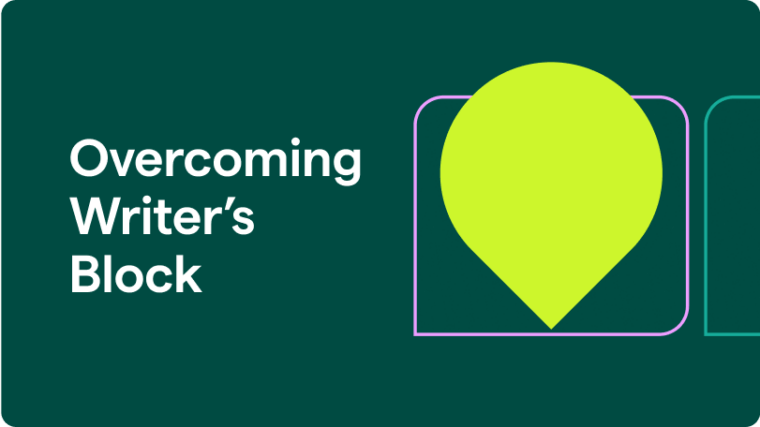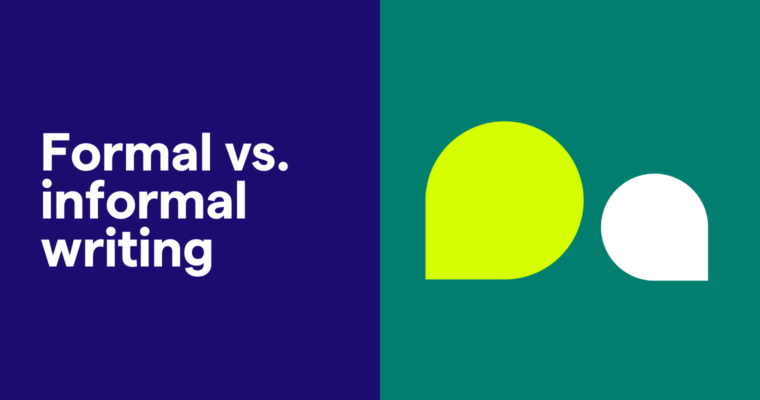
- End a letter with a respectful word or short phrase that signs off your message and signals your letter is complete.
- Common ways to end a letter include “Sincerely,” “Respectfully,” “Regards,” “Best,” and “Appreciatively.”
- Effective formal letter closings are polite, professional, and clear. They are generally used to express appreciation, respect, or goodwill toward your recipient.
- How you end your letter can determine how the recipient receives your message and the overall impression you leave.
- Avoid informal sign-offs like “Cheers,” “Love,” or “Ciao” in professional or formal letters.
You’re nearly through drafting a letter. It has an appropriate greeting, well-written body text, and a meaningful closing sentence. The next and final step is to end your letter with a closing that captures the intent of your message and strikes the right tone with your recipient.
With so many ways to end a letter, you may wonder which closing best suits your message. Here are some guidelines on how to end a formal letter effectively in a professional setting.
Table of contents
What is a formal letter closing?
Why is the ending of a formal letter important?
What to consider when ending a formal letter
10 ways to end a formal letter
Formal letter closings to avoid
What is a formal letter closing?
A formal letter closing is a word or short phrase before your signature that signs off your message and signals that it’s complete. Letter closings help to express appreciation, respect, or goodwill toward your recipient.
As a crucial part of professional correspondence in letters and emails, closings are considered good etiquette. The best letter closings have a tone that matches everything else in the letter, including the greeting.
When you’re ready to end your formal letter, select an appropriate closing that captures your intentions. Capitalize the first word of your closing and follow the phrase with a comma.
Why is the ending of a formal letter important?
Your letter closing is the last thing your recipient will read, which is why it’s essential to end a formal letter or email appropriately. How you end your letter can dictate how your recipient receives your message and the overall impression you leave.
It can also help set the tone for future communications, build rapport with the recipient, or strengthen an existing relationship. Your letter may also include specific requests, instructions, or action items, and a well-crafted ending can help guide your recipient on what to do next.
What to consider when ending a formal letter
An effective ending to a formal letter is polite, professional, and clear. Here’s what to consider as you determine how to end your letter.
Strike the intended tone with your letter closing
Your entire letter should maintain a professional tone, including your letter closing. Be direct yet respectful, and avoid slang, informal expressions, or being too casual. You want to leave a good impression on your recipient, so choose closing words and phrases that help you accomplish that.
Consider your relationship with the recipient
How you end your letter should reflect your relationship with the recipient. If your letter is addressed to a manager or supervisor, your closing should convey respect or deference.
If you’re writing to someone for the first time or to someone you don’t know well, make sure you don’t assume familiarity. When your letter is for someone you’ve worked or interacted with frequently, a more informal closing that maintains professionalism may be appropriate.
Remember the purpose of your letter
Your closing should match your overall purpose—the reason you’re sending the letter. If you’re writing specifically to request something or to express gratitude, your letter should close with an appreciative sign-off.
If the goal of your letter is to pursue or further a professional connection, convey formality and respect with your closing to help ensure good communication moving forward.
Write a meaningful sentence before your sign-off
After the main body of your letter but before the sign-off, include a meaningful sentence that captures the main message of your letter. Whether lining up a meeting, looking for assistance, or sending a cover letter with your résumé, you want your letter to end by clarifying where you stand. Here are some examples.
Include your signature and contact information after your closing
You should always include your signature and contact information after closing a letter. If you’re mailing your letter, include your address at the top of the letter so that the recipient can respond by mail if necessary.
In emails, you don’t need to type your name after the sign-off if you have a professional email signature. It typically contains your full name, job title, email address, and phone number.
If you don’t have an email signature, include any relevant contact information after your name so the recipient can reach you in other ways.
10 ways to end a formal letter
Here are some of the most popular ways to end a formal letter, which you can use in various professional settings.
1 Sincerely
“Sincerely” means “genuinely” or “honestly,” which is why it’s commonly used to indicate that the message’s contents are genuine and the sender is trustworthy. This traditional sign-off politely concludes the letter on a positive yet formal note without drawing too much attention.
Some variations of “Sincerely” include:
- Sincerely yours, (American English)
- Yours sincerely, (British English)
- With sincerity,
2 Cordially
“Cordially” is a polite and formal closing that expresses warmth, friendliness, and courteousness. It is well suited for professional and social correspondence.
Here are some other ways to say “Cordially”:
- Warmly,
- Kindly,
- Graciously,
3 Thank you
Expressing gratitude for the recipient’s time is an effective way to end a formal letter. Use this sign-off when making a request or thanking the recipient for a favor, endorsement, referral, or opportunity. “Thank you” is also a good way to sign off if the intention of your letter is to acknowledge the recipient’s specific efforts.
Some alternatives to “Thank you” include:
- Thanks,
- Many thanks,
- With sincere thanks,
- Thanks for your [time, consideration, recommendation, assistance, etc.],
- Thanks again, (if you’ve already said “Thank you” elsewhere in the letter)
- With gratitude,
4 Appreciatively
Like “Thank you,” this letter closing clearly expresses gratitude to the recipient. It’s polite, appropriately formal, and can help you avoid overusing “Thanks” if you’ve already thanked the recipient.
Some other ways to say “Appreciatively” include:
- With appreciation,
- I appreciate your [help, input, feedback, hard work, etc.],
- Much appreciated,
- Gratefully,
5 Regards
As a friendly and approachable letter closing, “Regards” suggests that you have respect for the recipient but not necessarily a close relationship with them. Because it is less formal than “Sincerely,” closing with “Regards” is useful in emails, which tend to be less formal than letters.
Here are some common variations on “Regards”:
- Best regards,
- Warm regards
- Kind regards,
- Kindest regards,
6 Best
Giving your best to the recipient is simple and straightforward, and it fits almost any letter or email. A bit more personal than the previous entries, this sign-off makes it clear that you wish the recipient well. It’s also appropriate for workplace goodbyes, such as when a coworker is retiring or leaving.
Other ways to wish the recipient well include:
- All the best,
- Best wishes,
- Kind wishes,
- Take care,
7 Respectfully
Commonly used in formal or professional settings, “Respectfully” is a simple way to convey respect for the recipient. This letter closing conveys a sense of deference, so make sure it suits the occasion.
Variations include:
- With respect,
- Respectfully yours,
- Yours respectfully,
8 Looking forward to ___
This letter closing expresses excitement or anticipation about future engagement with the recipient. It’s especially useful in professional settings when you’re about to begin a project or task with the recipient and want to convey a cooperative and optimistic tone for what’s next.
Here are some ways to share that you’re looking forward to engaging with the recipient:
- I look forward to [your reply, hearing from you, working with you, etc.]
- I’m excited to [work with you, get together, collaborate, see what comes next, etc.],
- I eagerly await [your reply, your response, hearing from you, etc.]
9 Talk soon
If you plan to talk to your recipient soon, feel free to let them know. While this letter closing is more informal than the others, it’s suitable for professional settings when you know you’ll speak to or meet with the recipient soon. It’s also helpful if you want to convey a desire to engage further.
Some alternatives to “Talk soon” include:
- Talk to you soon,
- Speak to you soon,
- Hope to hear from you soon,
10 Have a good day
When you want to communicate a friendly, approachable tone, “Have a good day” is a positive way to end your letter with goodwill for the recipient. This closing is more appropriate for emails than letters, signaling to the recipient that you wish them well for the remainder of their day.
Here are some variations on “Have a good day”:
- Hope your day goes well,
- Enjoy your day,
- Have a good evening, (if you’re sending an email toward the end of the workday)
- Have a great weekend, (if you’re sending an email on a Friday and don’t expect to engage with the recipient until the following week)
Formal letter closings to avoid
To ensure you leave a good impression, there are certain letter closings you should avoid using in formal settings. Although some workplace cultures or relationships may dictate a more informal approach, you generally don’t want to be too casual or personal in a professional letter or email.
These letter closings are considered too informal in professional communication:
- Cheers,
- Ciao,
- XOXO,
- Love, or With love,
- Always,
- Yours truly,
- Have a blessed day,
- Good luck,
You should also generally avoid omitting a letter closing or simply using your initials. Unless you’re sending a brief, informal email, skipping the sign-off can seem impolite or careless.
How to end a letter FAQs
Can I end a paper letter and an email in the same way?
It’s generally appropriate to end a paper letter and an email in the same way, although it may be appropriate to end emails with shorter, more informal sign-offs like “Best” or time-sensitive sign-offs like “Talk soon” or “Have a good day.”
What are some other ways to say “Sincerely”?
- Cordially,
- Appreciatively,
- Respectfully,
- Best,
- Regards,
What’s the difference between a formal and an informal letter closing?
Formal letter closings are generally used in professional correspondence or with someone you haven’t met or don’t know well. Informal letter closings are generally used in correspondence with friends, close colleagues, or other communications outside of the workplace. If you’re unsure how to close a professional letter, use a more formal closing just to be safe.
“Sincerely,” “Regards,” and “Appreciatively” are all appropriate closings for formal letters. “Take care,” “Have a good day,” and “Thanks!” work for a more informal approach.






